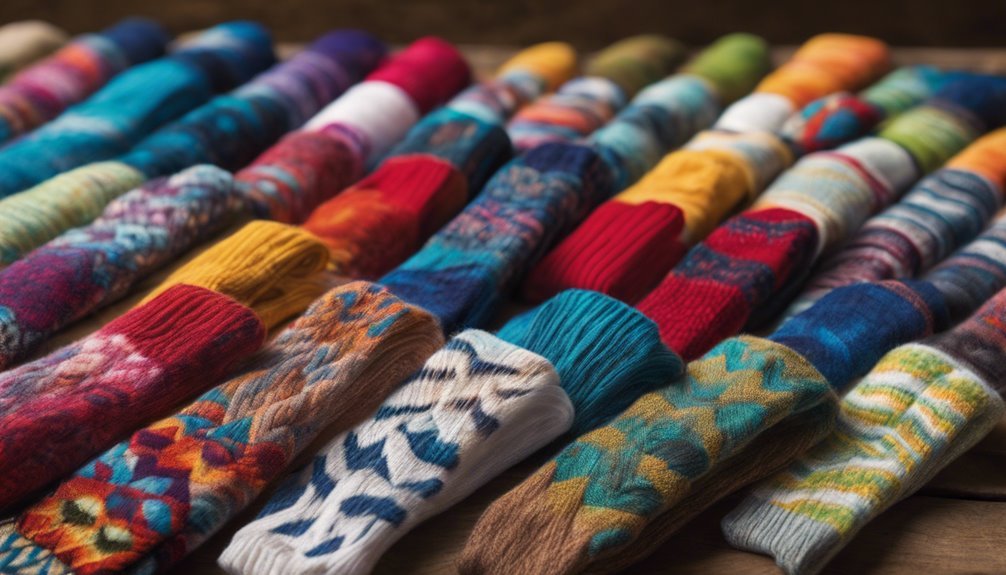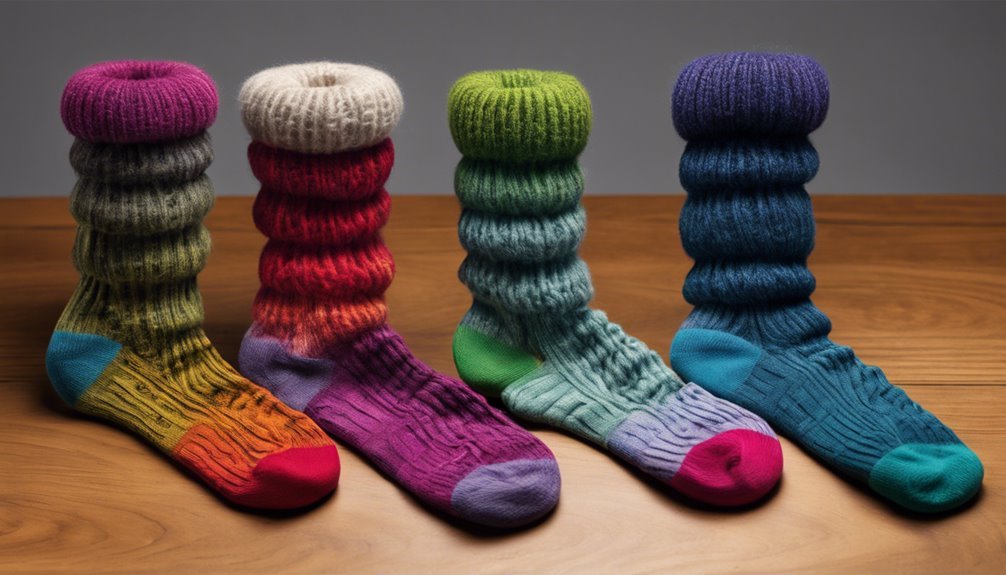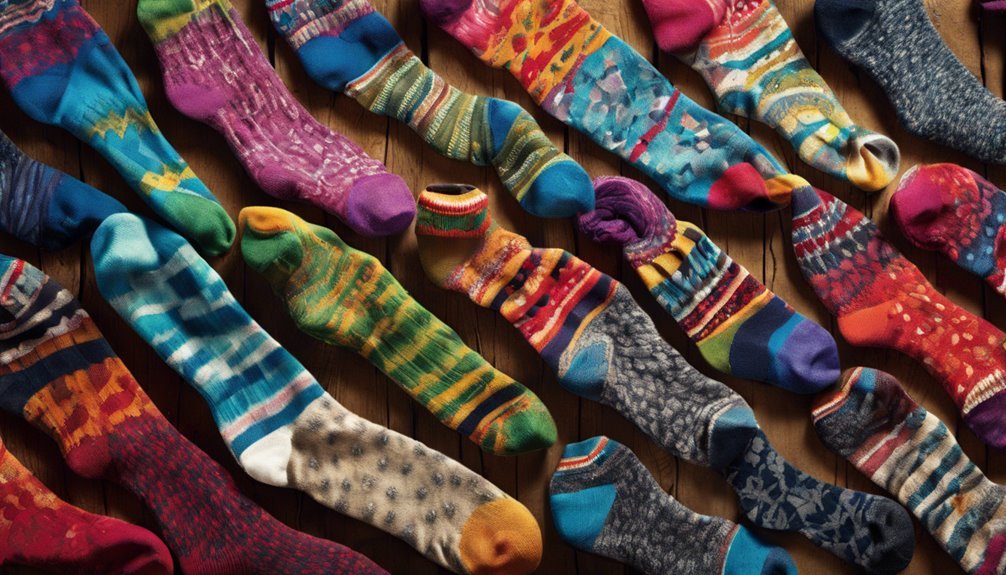Why Do Socks Shrink in the Wash? The Science of Fabric Fibers
Imagine this: You've just purchased a pair of cozy wool socks, perfect for the chilly season ahead. After wearing them a few times, you toss them into the wash, only to find them significantly smaller afterward.
Have you ever noticed how your favorite socks seem to shrink after a wash? It's a common dilemma faced by many.
When washing socks, shrinkage is often the result of heat, water, agitation, and detergent interactions with fabric fibers. Natural fibers like cotton and wool absorb moisture and contract more compared to synthetics.
Hot water and harsh detergents break fiber tensions, causing shrinkage. Agitation aligns fibers compactly, while fabric blends and specific washing practices can mitigate these effects.
Understanding fiber properties and making careful laundry choices can help maintain sock size and shape over time.
Understanding the Composition of Sock Fabrics

The intricacies of sock fabrics play a pivotal role in their behavior during washing. You'll find that fiber properties, like elasticity and tensile strength, determine how socks respond to mechanical stress and moisture. Natural fibers, such as cotton and wool, tend to be more prone to shrinkage due to their hygroscopic nature. Synthetic fibers, like polyester and nylon, offer more resistance but can still contract, depending on the blend.
Analyzing fabric blends is essential. A balanced combination of fibers can mitigate shrinkage by leveraging the strengths of each component. For instance, incorporating spandex can enhance elasticity, counteracting shrinkage. Understanding these fabric dynamics empowers you to choose socks that maintain their shape and size, granting the freedom to move without restriction, even after numerous washes.
The Role of Water Temperature in Sock Shrinkage
When you wash socks in hot water, the heat can cause the fibers to contract, leading to noticeable shrinkage, especially in temperature-sensitive fabrics like wool and cotton blends. Opting for a cold wash can mitigate this risk, as lower temperatures reduce the likelihood of fiber constriction and preserve the sock's original dimensions. Understanding the specific temperature requirements of your sock's material composition is essential for maintaining their fit and longevity.
Hot Water's Impact
While washing your socks, water temperature plays an essential role in determining whether they'll fit the same afterward. Hot water accelerates the fabric reaction, causing fibers to contract, especially those made from wool or cotton. The heat loosens the tension in the threads, allowing them to return to their natural, tighter state. This contraction leads to noticeable sock shrinkage.
Here's a quick look at how hot water affects different fabrics:
| Fabric Type | Reaction to Hot Water | Shrinkage Potential |
|---|---|---|
| Wool | High Fiber Contraction | High |
| Cotton | Moderate Contraction | Moderate |
| Synthetic | Minimal Reaction | Low |
Using precise control over your wash settings grants you the freedom to maintain your socks' shape and size. Understanding these fabric reactions empowers you to make informed laundering choices.
Cold Wash Benefits
If you're aiming to minimize sock shrinkage, opting for a cold wash can be a strategic move. Cold water reduces fiber contraction, maintaining fabric integrity. This approach not only preserves sock size but also offers energy savings, aligning with a sustainable lifestyle. When you wash in cold water, you're taking steps towards:
- Energy Efficiency: Cold washes require less energy, reducing your carbon footprint and lowering utility bills.
- Fabric Preservation: Cold water minimizes stress on fibers, prolonging the lifespan of your socks and maintaining their original fit.
- Color Retention: Cold washes prevent color fading, keeping your socks vibrant.
Temperature-Sensitive Fabrics
Understanding how to maintain sock size isn't just about the benefits of cold washes; it's also about recognizing the nature of temperature-sensitive fabrics. Fabric elasticity and fiber memory play essential roles in how socks respond to varying water temperatures. When exposed to high temperatures, fibers can lose their elasticity, causing them to contract and leading to shrinkage. This is especially true for natural fibers like wool and cotton, which are more temperature-sensitive compared to synthetics. Fiber memory, the ability of fibers to return to their original shape, can be compromised by heat, making it difficult for socks to maintain their intended size. By managing water temperature, you can preserve both the elasticity and memory of your socks' fibers, ensuring they remain comfortable and fitting.
How Agitation Affects Fabric Fibers During Washing
Because the washing process involves both mechanical and chemical actions, the agitation in a washing machine plays a significant role in altering fabric fibers. The agitation effects are essential as they enhance fabric movement, which can lead to shrinkage. When you wash socks, the fibers are constantly jostled, repositioned, and compressed, causing them to contract.
Consider the following aspects:
- Fiber Stress: Continuous motion induces stress, forcing fibers to realign more compactly.
- Tension Release: Agitation releases pre-existing tension in fibers, facilitating their contraction.
- Inter-fiber Friction: As fabrics rub against each other, friction generates heat, promoting fiber tightening.
Understanding these factors empowers you with the freedom to choose washing settings that minimize unwanted shrinkage, preserving your socks' original size and integrity.
The Impact of Detergents on Sock Materials

How do detergents affect the materials in your socks during the wash cycle? Different detergent types interact uniquely with fabric fibers, influencing how they maintain or alter their form. Enzymatic detergents target protein-based stains, which could inadvertently weaken natural fibers like wool, leading to shrinkage. Meanwhile, high-alkaline detergents may disrupt the delicate balance of synthetic fibers, causing them to contract unevenly. The surfactants in detergents play an essential role in loosening dirt but can also affect fabric reactions by stripping essential oils from fibers, leaving them more prone to damage. Opting for a detergent type tailored to your sock material can help preserve their original shape. Understanding these interactions provides the freedom to choose the best care for your socks.
The Science Behind Fiber Contraction and Relaxation
When washing socks, you should consider how temperature variations cause fibers to contract as heat energy increases molecular motion, disrupting the fiber's structure. Additionally, moisture plays a critical role as it interacts with fibers, leading to the relaxation or further contraction of the material. Understanding these interactions helps you predict and mitigate unwanted shrinkage in your socks.
Temperature's Impact on Fibers
Although it may seem surprising, the temperature of water used during washing plays a critical role in the behavior of fibers, particularly in the contraction and relaxation processes that lead to sock shrinkage. Understanding fiber elasticity and temperature thresholds is essential for maneuvering this phenomenon. When fibers are exposed to high temperatures, their elasticity is temporarily altered, causing them to contract. Here's what you should know:
- High Temperature: Water above specific temperature thresholds can cause fibers to lose elasticity, leading to shrinkage.
- Low Temperature: Washing in cooler water preserves fiber elasticity, minimizing contraction.
- Consistent Temperature: Maintaining a uniform temperature can prevent sudden fiber relaxation or contraction, reducing shrinkage risks.
Recognizing these dynamics allows you to exercise freedom in preserving your garments' integrity.
Moisture and Fiber Reaction
As you explore the interaction between moisture and fibers, it's essential to comprehend the scientific principles governing fiber contraction and relaxation. When your socks absorb moisture, fiber elasticity plays a vital role. The hydrophilic nature of fibers causes moisture absorption, leading to swelling and subsequent tension release. This dynamic affects fibers' structural integrity, causing them to contract and relax in response to humidity changes.
| Emotion | Fiber Behavior |
|---|---|
| Frustration | Shrinking due to contraction |
| Relief | Relaxation after moisture loss |
| Curiosity | How elasticity varies |
Understanding this process grants you the freedom to manage your laundry effectively, reducing shrinkage risks. Analyzing fiber elasticity helps you predict how fibers will behave in various moisture environments, ultimately empowering you to maintain the desired size and shape of your socks.
Comparing Natural and Synthetic Fibers in Sock Shrinkage

In the analysis of sock shrinkage, understanding the differences between natural and synthetic fibers is essential. Natural fibers, like cotton and wool, are prone to shrinkage due to their hygroscopic nature, absorbing moisture and contracting when exposed to heat. Synthetic fibers, such as polyester and nylon, exhibit less shrinkage, thanks to their lower moisture absorption and engineered stability. Comparing these materials involves evaluating:
- Shrinkage comparison: Natural fibers tend to shrink more than synthetics during washing.
- Fabric durability: Synthetic fibers generally offer enhanced durability, resisting wear and tear.
- Maintenance requirements: Natural fibers often require gentler washing to maintain form and longevity.
For those craving freedom in clothing maintenance, synthetics might offer more resilience, while natural fibers provide a classic feel but demand careful handling.
Tips to Minimize Sock Shrinkage in the Laundry
To minimize sock shrinkage in the laundry, understanding the interplay of water temperature, washing cycles, and drying methods is essential. By mastering sock care, you can maintain their original size and shape. Implement the following laundry practices:
- Water Temperature: Always opt for cold or lukewarm water.
- Washing Cycles: Use gentle or delicate settings.
- Drying Methods: Air-dry your socks whenever possible.
Here's a quick reference:
| Aspect | Recommendation | Benefit |
|---|---|---|
| Water Temp | Cold/Lukewarm | Reduces fiber contraction |
| Washing Cycle | Gentle/Delicate | Minimizes agitation |
| Drying Method | Air-dry | Prevents heat damage |
| Detergent Type | Mild | Protects fiber integrity |
| Sock Material | Natural/Synthetic Mix | Balances durability & fit |
Adopting these strategies grants you the freedom to preserve your socks' longevity.
Innovative Solutions and Technologies in Sock Manufacturing
While mastering laundry techniques helps preserve your socks, advancements in sock manufacturing offer even more robust solutions to combat shrinkage. By integrating smart fabrics and eco-friendly materials, the industry is revolutionizing how socks respond to wear and washing. Consider these innovations:
- Smart Fabrics: These fibers adapt to environmental changes, reducing shrinkage by maintaining stability under varying temperatures and moisture levels.
- Eco-Friendly Materials: Utilizing organic and recycled fibers not only minimizes environmental impact but also enhances durability and elasticity, offering a resilient alternative to traditional fabrics.
- Nanotechnology: This cutting-edge approach modifies fabric at the molecular level, enhancing resistance to shrinkage and deformation through reinforced fiber structures.
These solutions provide you with the freedom to enjoy longer-lasting, perfectly fitted socks without the constant worry of them shrinking.
Frequently Asked Questions
Can Pre-Washing Socks Prevent Them From Shrinking in Future Washes?
Pre-washing socks can minimize future shrinkage by loosening fibers. Employing effective pre-wash techniques, such as cold water and specialized detergents, acts as a fabric treatment, ensuring fibers maintain elasticity, granting you freedom from unwanted shrinkage.
Do Certain Sock Brands Shrink Less Than Others in the Wash?
Consider when Brand A's socks, made from synthetic fibers, shrink less than Brand B's cotton ones. You'd analyze sock materials to make brand comparisons, seeking freedom from shrinkage issues by choosing brands with durable fiber compositions.
Is Hand Washing Socks More Effective in Preventing Shrinkage?
Hand washing can reduce shrinkage, especially with delicate fabric types. By controlling water temperature and agitation, you maintain fiber integrity. However, it's essential to take into account each fabric's specific care instructions for best results. Choose freedom in preservation!
How Does the Drying Process Influence Sock Shrinkage?
Think of socks as a sponge; high drying temperatures can squeeze them tight, leading to shrinkage. Controlling drying temperature and monitoring moisture retention are key to maintaining their original size and granting them a little freedom.
Can Fabric Softeners Reduce Sock Shrinkage During Laundering?
You're considering fabric softeners to combat sock shrinkage. They can help by reducing fiber tension, especially in natural fiber types like cotton. However, their effectiveness varies; synthetic fibers might see less impact. Choose wisely for laundry freedom.







